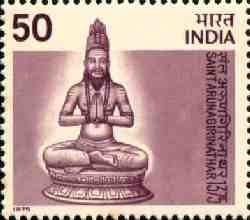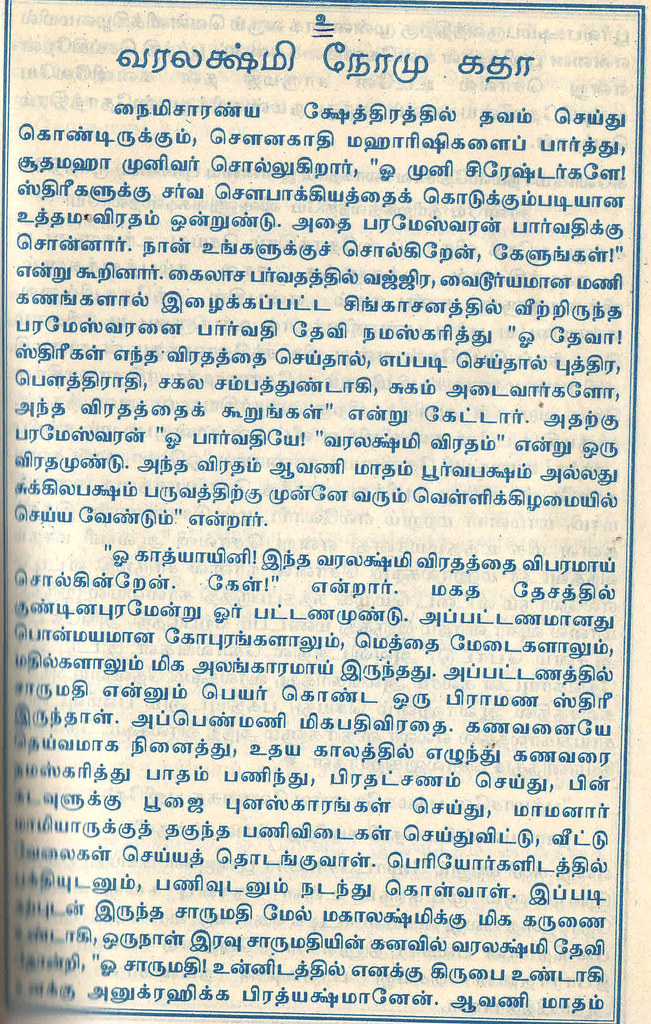Thank to : https://muruganarul.blogspot.com/2007/11/5.html
அத்தை கிட்ட போயி, அந்தப் பாட்டைச் சொல்லித் தருமாறு கேட்டேன்! அவங்க மயக்கம் போட்டு விழாத குறை தான்!
பின்னே, காலங்காத்தால எழுந்து, பாலும் தெளிதேனும்-னு சொல்றதுக்கே மோரும் ஃபோர்ன்வீட்டாவும்-னு சொல்ற பையன் நானு! :-)பள்ளியில் எப்படியும் எனக்குத் தான் பரிசு தரணும் - அதுக்கு ஏதாச்சும் ஏற்பாடு பண்ணுங்க அத்தை-ன்னு கெஞ்சிக் கூத்தாடி...கடைசியில் அந்தப் பொறுமையின் சிகரம், பாதிப் பாட்டை எனக்குச் சொல்லிக் கொடுத்தே...ஓடாய்த் தேஞ்சிப் போயிட்டாங்க!
நானும், சும்மா இல்லாம, நண்பர்கள் கிட்ட அளப்பற வுடலாம்-னு...பாட்டை அவிங்க முன்னாடி மனப்பாடமா எடுத்து வுட்டேன்!
பசங்க கதி கலங்கிப் போயிட்டாங்க! எப்படிடா ஒரே நாள்-ல இப்படிக் கொட்டு கொட்டு-ன்னு கொட்டற-ன்னு ஒரே பாராட்டு மழை! நானும் அதுல நனைஞ்சி போயி, பாதிப் பரிசு அப்பவே கிடைச்சுட்டதா நினைச்சுகிட்டேன்!
ஆனா வந்தது பாருங்க ஒரு வினை! கோபால்-ங்கிற பையன் ரூபத்துல!
இந்தப் பாட்டை அட்சரம் பிசகாம அப்படியே பாடினா...
ஏதாச்சும் ஒரு பறவை, கிளியோ குருவியோ.....
பாட்டைக் கேட்டு அப்படியே கீழே விழுந்து செத்துப் போகுமாம்!
இப்படி-ன்னு குண்டைத் தூக்கிப் போட்டான்!
அருணகிரி பாடினப்போ ஒரு கிளி விழுந்துச்சாம்டா...இன்னிக்கும் திருவண்ணாமலையில கிளி கோபுரம்னு ஒன்னு இருக்காம்-னு எடுத்து விட்டான் ஒரு பிட்டை!
எனக்கு ஒரே சங்கடமாப் போச்சுது!
இயற்கையிலேயே எனக்கு ரொம்பக் கருணை சுபாவம் பாருங்க! மனசே கேக்கலை! போட்டியிலிருந்து பேரை விலக்கிக்கிட்டு, அப்படியே வந்துட்டேன்;
அத்தை, என்னடா விசயம்?; மீதிப் பாட்டை எப்ப கத்துக்கப் போற?-ன்னு கேட்க, விசயத்தைச் சொன்னேன்!
ஒரு உயிரைக் கொன்னு, அப்படி என்ன சாமிப் பாட்டு வேண்டிக் கிடக்கு?
ஒன்னும் தேவையில்லை! போங்க அத்தைன்னு....
சொல்ல, அவங்க விழுந்து விழுந்து சிரிச்சாய்ங்க! அடப் பாவி...உன்னைப் போட்டியில் இருந்து ஒதுக்க, நல்லாவே கதை விட்டுருக்கான் அந்தப் பையன்! அது புரியாம கோக்கா மாக்கானா இருக்கியே நீயி-ன்னு சொன்னதும்...ரோசம் பொத்துக்கினு வந்திருச்சு!
அடப் பாவி கோபாலு...நீ கோபாலா, கோயபெல்ஸா?
மீதிப் பாட்டை அன்னிக்கே கஷ்டப்பட்டு உருப் போட்டேன்! பொருளும் சொல்லிக் கொடுத்தாங்க அத்தை! ஆனா அதெல்லாம் யாருக்கு வேணும்?
போட்டி நடந்தது!!! பொருள் என்னன்னே தெரியாம, கடகட வென்று ஏத்த எறக்கத்துடன் கொட்டித் தீர்த்தேன்!
இடி இடிச்சு முடிஞ்சாப்பல இருந்துச்சாம்! நண்பர்கள் சொன்னாய்ங்க!
பாடி முடிச்சவுடன் மறக்காம சுற்றும் முற்றும் பார்த்தேன். எந்தப் பறவையும் கீழே விழவில்லை! :-)

எனக்கே முதல் பரிசு! கையெழுத்துப் போட்டியில் இன்னொரு பரிசு! ஹைய்யா!
பரிசு கொடுக்க மேடைக்குக் கூப்பிட்டாங்க...
வாரியார் கையால பரிசு-ன்னா சும்மாவா? ஒரே டென்சன்...அவரு சிரிச்சிக்கிட்டே கொடுத்தாரு சான்றிதைழ்களையும், மயில் பொம்மைகளையும்!
ரெண்டு பரிசா?...கை நிறைய இருந்துச்சா?
வாங்குற பதற்றத்துல நான் மயிலைக் கீழே போட, போச்சுடா!
கோபாலு சொன்னது சரி தான்! பாட்டைப் பாடினா, பறவை கீழே விழும்-னான்! விழுந்திடிச்சி!:)))
நல்ல காலம் பொம்மை ஒடியலை! கம்பி மயிலு பாருங்க!
வாரியார் காலடியில் குனிஞ்சு பொம்மையை எடுத்த போது...சிரிச்சிக்கிட்டே தூக்கி, தலையைத் தடவிக் கொடுத்தது...இன்றும் இனிக்கிறது!
அடே கோபால், உன்னால தான்டா இந்த ஆசீர்வாதம் கிடைச்சுது...
இன்னிக்கு அவனும் அமெரிக்காவுல தான் இருக்கான்! இன்றும் இது பற்றிப் பேசிச் சிரித்துக் கொள்வோம்! :-))

அருணகிரிக்கு "முத்து" என்ற முதற் சொல் எடுத்துக் கொடுத்தான் முருகன்!
அப்படித் தோன்றியது திருப்புகழ் - முத்தைத் தரு பத்தித் திருநகை என்று அழகிய சந்தப் பாடலாக! முத்து = அருணகிரி சிறு வயதிலேயே பறிகொடுத்த அம்மா பேரு!
முத்து = குற்றயலுகரம்; முத்தி = முற்றியலிகரம்! முத்து=முத்தி தரு பத்தித் திருநகை!
இன்றைய சஷ்டிப் பதிவில் அதைக் கேட்டு இன்புறுவோம்! - கீழே அருணகிரிநாதர் படத்தில் இருந்து youtube வீடியோவும் இருக்கு, பாருங்க!
முடிந்தால் கூடவே படிச்சிப் பாருங்க! பிடிச்சிப் போயிடும்! - அப்படி ஒரு சொற்கட்டு! தாளக்கட்டு! ஜதிக் கட்டு!
பொதுவா வடமொழி மந்திரங்கள் தான் ஓசை முழக்கம்-னு சொல்லிச் சிலாகிச்சிப்பாங்க சிலபேரு! ஆனா இந்தத் தமிழ் மந்திரத்தின் ஓசையும் கேட்டுப் பாருங்க! அப்படி ஒரு முழக்கம்!
* TMS பாடுகிறார், அருணகிரிநாதர் திரைப்படத்தில்
** வீணை இசையில் பிச்சுமணி
(வாசிக்க எளிதாக இருக்கட்டுமே-ன்னு பதம் பிரிச்சு தந்துள்ளேன்; சந்தத்தோடு ஒட்டினாற் போல் சேர்த்துப் படிக்கவும்/பாடவும்!)
சின்ன வயசுல பள்ளிக் கூடத்துல ஒரு போட்டி! ஏதோ கந்த சஷ்டியாம்! அதுவோ ஒரு ஜைனப் பள்ளிக்கூடம்; இருந்தாலும் தமிழாசிரியர் போட்டிய வச்சிட்டாரு!
கரெக்டா சொல்லணும்னா, ஆசிரியர் அல்ல! ஆசிரியை! ஆ+சிரியை = சிரிச்சிக்கிட்டே ரொம்ப அன்பா, அழகா இருப்பாய்ங்க! :-)
தமிழ் விழா-ங்கிற பேருல, எங்க க்ரூப் மாணாக்கர்களுக்கு மனப்பாடச் செய்யுளைப் போட்டியா வச்சிட்டாங்க!
முத்தைத்தரு பத்தித் திருநகையை மனப்பாடமா, தவறில்லாம, படபட-ன்னு வேகமாச் சொல்லணும்!
அப்படிப் பிரமாதமாச் சொல்லி முடிக்கறவங்களுக்கு, தோகை விரித்த மயில் பொம்மை பரிசு! கம்பியில் செஞ்ச மயிலு! நிஜமான மயில் தோகை இருக்கும்!
டீச்சர், இப்படிச் சொன்னது தான் தாமதம், வீட்டுக்கு ஒரே ஓட்டமா ஓடியாந்தேன்! என் அத்தை படிக்கும் திருப்புகழ் புத்தகத்தை எடுத்து நோட்டம் விட்டேன்!
முத்தைத் தரு பத்தி - எந்தப் பக்கத்துல இருக்குன்னு கரெக்டாக் கண்டுபுடிச்சிட்டேன்! ஆனா ஒன்னுமே புரியலை! சும்மா வாய் விட்டுப் படிச்சிப் பாத்தேன்! வாய் குழறது!
தக்கத் தக தக்கத் தக தக - குக்குக் குகு குக்குக் குகு குகு......
அட என்னடா இது! ரயில்ல கூட்ஸ் வண்டிக்காரன் எழுதின பாட்டைத் தான் நைசா அருணகிரி எழுதிட்டாரு-ன்னு மக்கள் சொல்லிப்பிட்டாங்களோ? :-)
இப்படிச் சின்ன வயசுக்கே உரிய அலுப்பும், குறும்பும்! முதல் பத்தியை எழுத்துக் கூட்டிப் படிக்கறதுக்குள்ள தாவு தீந்து போச்சு! :-)
கரெக்டா சொல்லணும்னா, ஆசிரியர் அல்ல! ஆசிரியை! ஆ+சிரியை = சிரிச்சிக்கிட்டே ரொம்ப அன்பா, அழகா இருப்பாய்ங்க! :-)
தமிழ் விழா-ங்கிற பேருல, எங்க க்ரூப் மாணாக்கர்களுக்கு மனப்பாடச் செய்யுளைப் போட்டியா வச்சிட்டாங்க!
முத்தைத்தரு பத்தித் திருநகையை மனப்பாடமா, தவறில்லாம, படபட-ன்னு வேகமாச் சொல்லணும்!
அப்படிப் பிரமாதமாச் சொல்லி முடிக்கறவங்களுக்கு, தோகை விரித்த மயில் பொம்மை பரிசு! கம்பியில் செஞ்ச மயிலு! நிஜமான மயில் தோகை இருக்கும்!
டீச்சர், இப்படிச் சொன்னது தான் தாமதம், வீட்டுக்கு ஒரே ஓட்டமா ஓடியாந்தேன்! என் அத்தை படிக்கும் திருப்புகழ் புத்தகத்தை எடுத்து நோட்டம் விட்டேன்!
முத்தைத் தரு பத்தி - எந்தப் பக்கத்துல இருக்குன்னு கரெக்டாக் கண்டுபுடிச்சிட்டேன்! ஆனா ஒன்னுமே புரியலை! சும்மா வாய் விட்டுப் படிச்சிப் பாத்தேன்! வாய் குழறது!
தக்கத் தக தக்கத் தக தக - குக்குக் குகு குக்குக் குகு குகு......
அட என்னடா இது! ரயில்ல கூட்ஸ் வண்டிக்காரன் எழுதின பாட்டைத் தான் நைசா அருணகிரி எழுதிட்டாரு-ன்னு மக்கள் சொல்லிப்பிட்டாங்களோ? :-)
இப்படிச் சின்ன வயசுக்கே உரிய அலுப்பும், குறும்பும்! முதல் பத்தியை எழுத்துக் கூட்டிப் படிக்கறதுக்குள்ள தாவு தீந்து போச்சு! :-)
 |  |
அத்தை கிட்ட போயி, அந்தப் பாட்டைச் சொல்லித் தருமாறு கேட்டேன்! அவங்க மயக்கம் போட்டு விழாத குறை தான்!
பின்னே, காலங்காத்தால எழுந்து, பாலும் தெளிதேனும்-னு சொல்றதுக்கே மோரும் ஃபோர்ன்வீட்டாவும்-னு சொல்ற பையன் நானு! :-)பள்ளியில் எப்படியும் எனக்குத் தான் பரிசு தரணும் - அதுக்கு ஏதாச்சும் ஏற்பாடு பண்ணுங்க அத்தை-ன்னு கெஞ்சிக் கூத்தாடி...கடைசியில் அந்தப் பொறுமையின் சிகரம், பாதிப் பாட்டை எனக்குச் சொல்லிக் கொடுத்தே...ஓடாய்த் தேஞ்சிப் போயிட்டாங்க!
நானும், சும்மா இல்லாம, நண்பர்கள் கிட்ட அளப்பற வுடலாம்-னு...பாட்டை அவிங்க முன்னாடி மனப்பாடமா எடுத்து வுட்டேன்!
பசங்க கதி கலங்கிப் போயிட்டாங்க! எப்படிடா ஒரே நாள்-ல இப்படிக் கொட்டு கொட்டு-ன்னு கொட்டற-ன்னு ஒரே பாராட்டு மழை! நானும் அதுல நனைஞ்சி போயி, பாதிப் பரிசு அப்பவே கிடைச்சுட்டதா நினைச்சுகிட்டேன்!
ஆனா வந்தது பாருங்க ஒரு வினை! கோபால்-ங்கிற பையன் ரூபத்துல!
இந்தப் பாட்டை அட்சரம் பிசகாம அப்படியே பாடினா...
ஏதாச்சும் ஒரு பறவை, கிளியோ குருவியோ.....
பாட்டைக் கேட்டு அப்படியே கீழே விழுந்து செத்துப் போகுமாம்!
இப்படி-ன்னு குண்டைத் தூக்கிப் போட்டான்!
அருணகிரி பாடினப்போ ஒரு கிளி விழுந்துச்சாம்டா...இன்னிக்கும் திருவண்ணாமலையில கிளி கோபுரம்னு ஒன்னு இருக்காம்-னு எடுத்து விட்டான் ஒரு பிட்டை!
எனக்கு ஒரே சங்கடமாப் போச்சுது!
இயற்கையிலேயே எனக்கு ரொம்பக் கருணை சுபாவம் பாருங்க! மனசே கேக்கலை! போட்டியிலிருந்து பேரை விலக்கிக்கிட்டு, அப்படியே வந்துட்டேன்;
அத்தை, என்னடா விசயம்?; மீதிப் பாட்டை எப்ப கத்துக்கப் போற?-ன்னு கேட்க, விசயத்தைச் சொன்னேன்!
ஒரு உயிரைக் கொன்னு, அப்படி என்ன சாமிப் பாட்டு வேண்டிக் கிடக்கு?
ஒன்னும் தேவையில்லை! போங்க அத்தைன்னு....
சொல்ல, அவங்க விழுந்து விழுந்து சிரிச்சாய்ங்க! அடப் பாவி...உன்னைப் போட்டியில் இருந்து ஒதுக்க, நல்லாவே கதை விட்டுருக்கான் அந்தப் பையன்! அது புரியாம கோக்கா மாக்கானா இருக்கியே நீயி-ன்னு சொன்னதும்...ரோசம் பொத்துக்கினு வந்திருச்சு!
அடப் பாவி கோபாலு...நீ கோபாலா, கோயபெல்ஸா?
மீதிப் பாட்டை அன்னிக்கே கஷ்டப்பட்டு உருப் போட்டேன்! பொருளும் சொல்லிக் கொடுத்தாங்க அத்தை! ஆனா அதெல்லாம் யாருக்கு வேணும்?
போட்டி நடந்தது!!! பொருள் என்னன்னே தெரியாம, கடகட வென்று ஏத்த எறக்கத்துடன் கொட்டித் தீர்த்தேன்!
இடி இடிச்சு முடிஞ்சாப்பல இருந்துச்சாம்! நண்பர்கள் சொன்னாய்ங்க!
பாடி முடிச்சவுடன் மறக்காம சுற்றும் முற்றும் பார்த்தேன். எந்தப் பறவையும் கீழே விழவில்லை! :-)

எனக்கே முதல் பரிசு! கையெழுத்துப் போட்டியில் இன்னொரு பரிசு! ஹைய்யா!
பரிசு கொடுக்க மேடைக்குக் கூப்பிட்டாங்க...
வாரியார் கையால பரிசு-ன்னா சும்மாவா? ஒரே டென்சன்...அவரு சிரிச்சிக்கிட்டே கொடுத்தாரு சான்றிதைழ்களையும், மயில் பொம்மைகளையும்!
ரெண்டு பரிசா?...கை நிறைய இருந்துச்சா?
வாங்குற பதற்றத்துல நான் மயிலைக் கீழே போட, போச்சுடா!
கோபாலு சொன்னது சரி தான்! பாட்டைப் பாடினா, பறவை கீழே விழும்-னான்! விழுந்திடிச்சி!:)))
நல்ல காலம் பொம்மை ஒடியலை! கம்பி மயிலு பாருங்க!
வாரியார் காலடியில் குனிஞ்சு பொம்மையை எடுத்த போது...சிரிச்சிக்கிட்டே தூக்கி, தலையைத் தடவிக் கொடுத்தது...இன்றும் இனிக்கிறது!
அடே கோபால், உன்னால தான்டா இந்த ஆசீர்வாதம் கிடைச்சுது...
இன்னிக்கு அவனும் அமெரிக்காவுல தான் இருக்கான்! இன்றும் இது பற்றிப் பேசிச் சிரித்துக் கொள்வோம்! :-))

அருணகிரிக்கு "முத்து" என்ற முதற் சொல் எடுத்துக் கொடுத்தான் முருகன்!
அப்படித் தோன்றியது திருப்புகழ் - முத்தைத் தரு பத்தித் திருநகை என்று அழகிய சந்தப் பாடலாக! முத்து = அருணகிரி சிறு வயதிலேயே பறிகொடுத்த அம்மா பேரு!
முத்து = குற்றயலுகரம்; முத்தி = முற்றியலிகரம்! முத்து=முத்தி தரு பத்தித் திருநகை!
இன்றைய சஷ்டிப் பதிவில் அதைக் கேட்டு இன்புறுவோம்! - கீழே அருணகிரிநாதர் படத்தில் இருந்து youtube வீடியோவும் இருக்கு, பாருங்க!
முடிந்தால் கூடவே படிச்சிப் பாருங்க! பிடிச்சிப் போயிடும்! - அப்படி ஒரு சொற்கட்டு! தாளக்கட்டு! ஜதிக் கட்டு!
பொதுவா வடமொழி மந்திரங்கள் தான் ஓசை முழக்கம்-னு சொல்லிச் சிலாகிச்சிப்பாங்க சிலபேரு! ஆனா இந்தத் தமிழ் மந்திரத்தின் ஓசையும் கேட்டுப் பாருங்க! அப்படி ஒரு முழக்கம்!
* TMS பாடுகிறார், அருணகிரிநாதர் திரைப்படத்தில்
** வீணை இசையில் பிச்சுமணி
(வாசிக்க எளிதாக இருக்கட்டுமே-ன்னு பதம் பிரிச்சு தந்துள்ளேன்; சந்தத்தோடு ஒட்டினாற் போல் சேர்த்துப் படிக்கவும்/பாடவும்!)
முத்தைத் தரு பத்தித் திருநகை
அத்திக்கு இறை சத்திச் சரவண
முத்திக்கு ஒரு வித்துக் குருபர ...... என ஓதும்
முக்கண் பரமற்குச் சுருதியின்
முற்பட்டது கற்பித்து இருவரும்
முப்பத்து முவர்க்கத்து அமரரும் ...... அடி பேணப்
பத்துத் தலை தத்தக் கணை தொடு
ஒற்றைக் கிரி மத்தைப் பொருது - ஒரு
பட்டப் பகல் வட்டத் திகிரியில் ...... இரவாகப்
பத்தர்க்கு இரதத்தைக் கடவிய
பச்சைப் புயல் மெச்சத் தகு பொருள்
பட்சத்தொடு ரட்சித்து அருள்வதும் ...... ஒருநாளே
தித்தித் தெய ஒத்தப் பரிபுர
நிரத்தப் பதம் வைத்துப் பயிரவி
திக்கொட்க நடிக்கக் கழுகொடு ...... கழுதாடத்
திக்குப் பரி அட்டப் பைரவர்
தொக்குத் தொகு - தொக்குத், தொகு தொகு
சித்ரப் பவுரிக்கு - த்ரி கடக ...... என ஓதக்
கொத்துப் பறை கொட்டக் களமிசை
குக்குக் குகு - குக்குக், குகு குகு
குத்திப் புதை - புக்குப் பிடி என ...... முது கூகை
கோட்புற்று எழ நட்பு அற்ற அவுணரை
வெட்டிப் பலி இட்டுக் குல கிரி
குத்துப் பட ஒத்துப் பொரவல ...... பெருமாளே.
அத்திக்கு இறை சத்திச் சரவண
முத்திக்கு ஒரு வித்துக் குருபர ...... என ஓதும்
முக்கண் பரமற்குச் சுருதியின்
முற்பட்டது கற்பித்து இருவரும்
முப்பத்து முவர்க்கத்து அமரரும் ...... அடி பேணப்
பத்துத் தலை தத்தக் கணை தொடு
ஒற்றைக் கிரி மத்தைப் பொருது - ஒரு
பட்டப் பகல் வட்டத் திகிரியில் ...... இரவாகப்
பத்தர்க்கு இரதத்தைக் கடவிய
பச்சைப் புயல் மெச்சத் தகு பொருள்
பட்சத்தொடு ரட்சித்து அருள்வதும் ...... ஒருநாளே
தித்தித் தெய ஒத்தப் பரிபுர
நிரத்தப் பதம் வைத்துப் பயிரவி
திக்கொட்க நடிக்கக் கழுகொடு ...... கழுதாடத்
திக்குப் பரி அட்டப் பைரவர்
தொக்குத் தொகு - தொக்குத், தொகு தொகு
சித்ரப் பவுரிக்கு - த்ரி கடக ...... என ஓதக்
கொத்துப் பறை கொட்டக் களமிசை
குக்குக் குகு - குக்குக், குகு குகு
குத்திப் புதை - புக்குப் பிடி என ...... முது கூகை
கோட்புற்று எழ நட்பு அற்ற அவுணரை
வெட்டிப் பலி இட்டுக் குல கிரி
குத்துப் பட ஒத்துப் பொரவல ...... பெருமாளே.



























